Affiliate links on Android Authority may earn us a commission. Learn more.
HUAWEI P series history: From humble beginnings to photography powerhouse
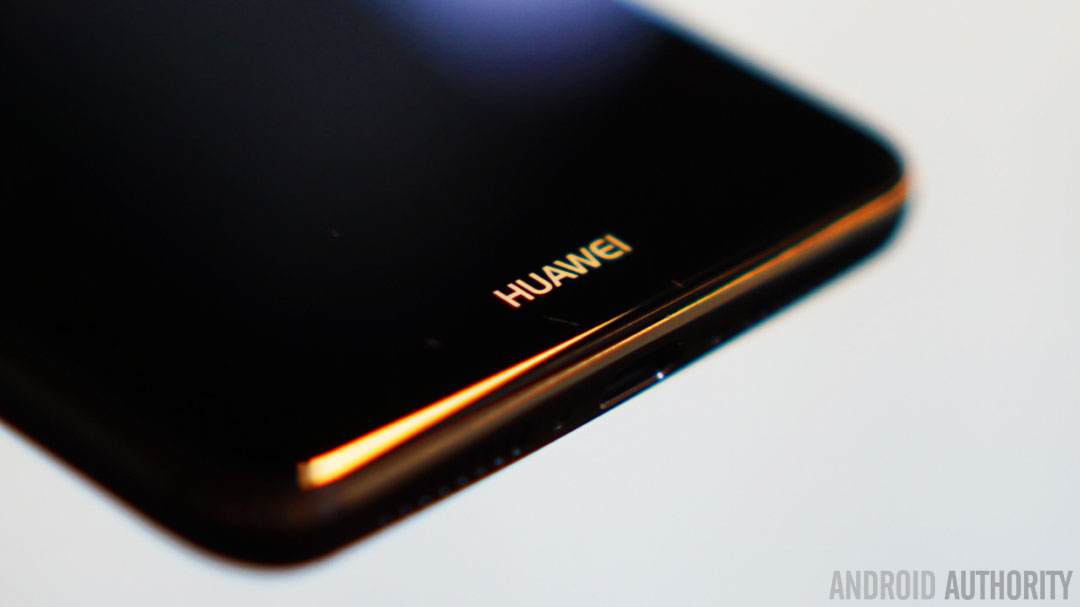
Huawei is one of the top-performing smartphone manufacturers today (despite the US trade ban), delivering a wide variety of devices for every price-point. But the firm’s flagship phones have also earned accolades for camera prowess, battery life, and fast charging.
It’s been a long road to this point for the company though, as its flagship P series has evolved in a big way from its early days. We take a look at the history of the all-popular HUAWEI P series ahead of the HUAWEI P40 and P40 Pro release.
HUAWEI Ascend P1 (2012)
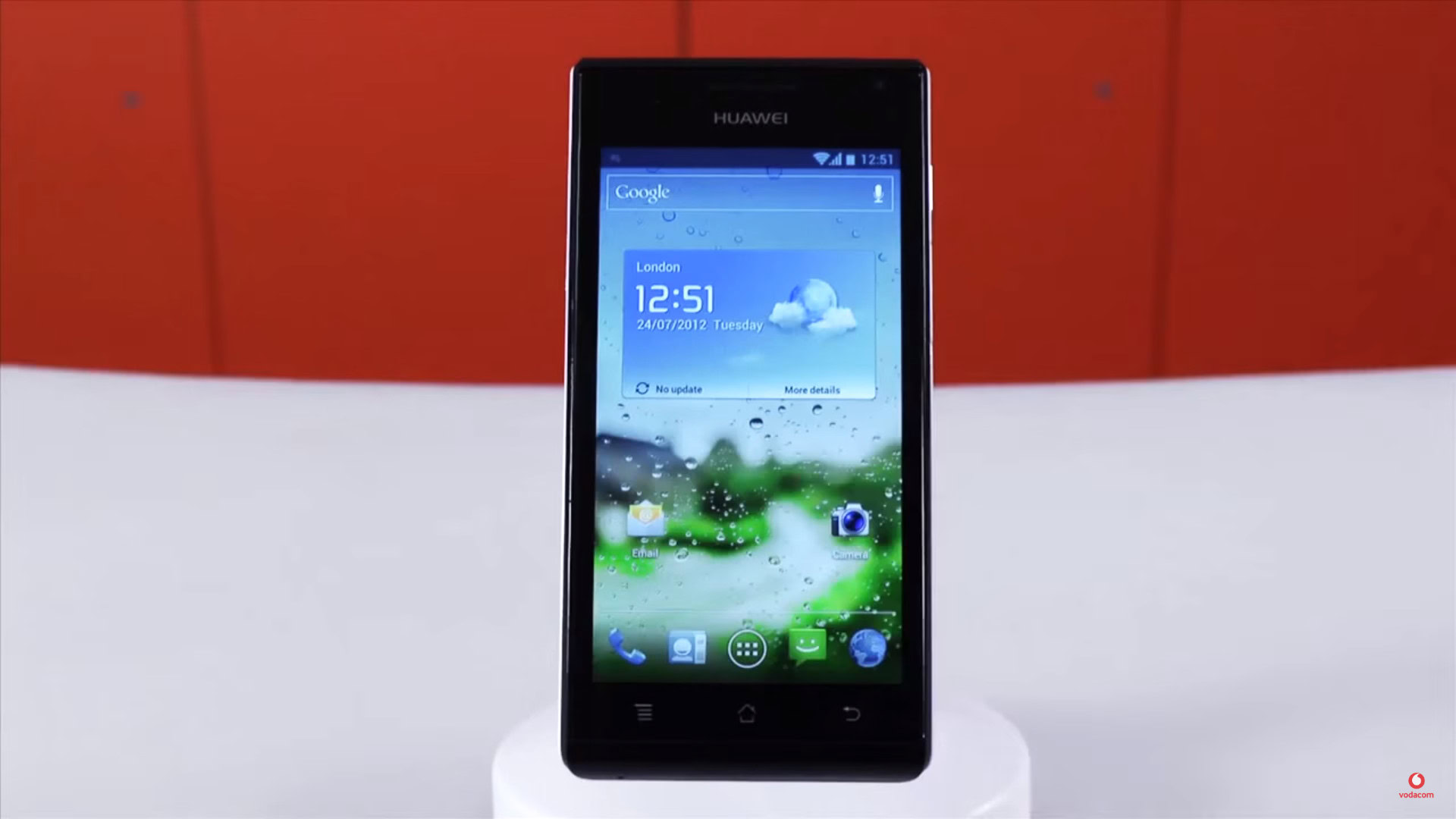
The Chinese manufacturer had a big reputation for white-labeled budget devices when it decided to launch the Ascend P1 in 2012. It wasn’t a very powerful device compared to contemporary phones back then, featuring a TI OMAP 4460 chipset (dual-core Cortex-A9), 1GB of RAM, and 4GB of expandable storage. Meanwhile, the Samsung Galaxy S3, launched in the same year, featured a quad-core chipset (quad-core A9), 1GB of RAM, and 16GB of expandable storage in the base model.
Then again, the Ascend P1 was cheaper than the likes of the Galaxy S3. And you still got a decent 4.3-inch 960 x 540 OLED screen, and 8MP backside-illuminated main camera.
Read: A definitive guide to everything that affects smartphone battery life
Probably the biggest disappointment was the tiny 1,670mAh battery. It would take HUAWEI a few generations to realize that many people didn’t care about a super-thin design if the phone’s endurance suffered greatly.
Clearly the HUAWEI Ascend P1 wasn’t quite flagship-tier, but it landed in what we now know as the upper mid-range price bracket.
HUAWEI Ascend P1 fast facts:
- The Ascend P1 launched with Android 4.0 Ice Cream Sandwich, but got upgraded to Android 4.2 Jelly Bean.
- US customers couldn’t get the phone from their carrier, but it was available in the market via Amazon. The more things change…
- The Ascend P1 retailed for $450 to $475, making it significantly cheaper than the ~$600 Galaxy S3.
HUAWEI Ascend P6 (2013)
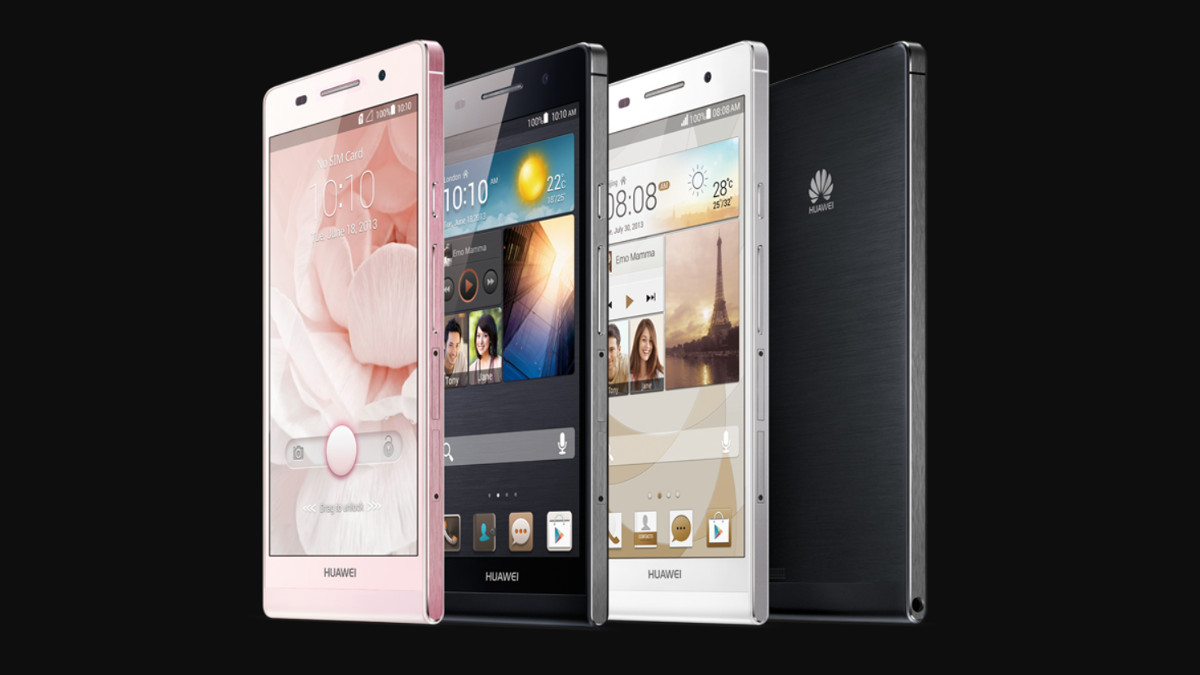
The next phone in the P-series was the HUAWEI Ascend P2 in 2013, but it was only on the market for a couple of months before the Chinese brand released the Ascend P6.
Design was a major focus for the P6, as the phone’s chin wrapped around the bottom of the device to form part of the back cover. HUAWEI compared this aesthetic to a folded up sheet of paper at the time, while also touting the thin design. It’s just a pity that the thin design meant we also saw a disappointing 2,000mAh battery. But the firm joined Sony and a few others in offering battery saver functionality ahead of stock Android, helping to squeeze a bit more juice out of the device.
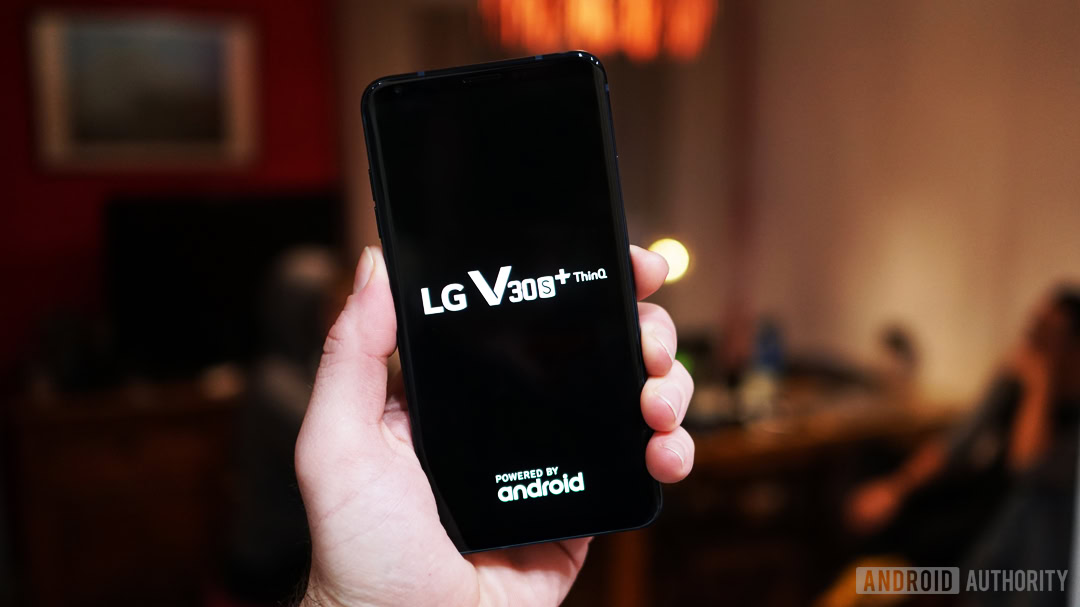
A smaller battery wasn’t the only lamentable decision made by HUAWEI in the name of design, as it chose to put the headphone port on the left-hand side of the phone. Why it didn’t opt to put the port at the top or bottom of the device, I’ll never know. Anyway, this decision meant you couldn’t comfortably keep the phone in your pocket while listening to music.
The device used a HUAWEI K3V2 processor that packed a decent level of power, featuring a quad-core Cortex-A9 design and a Vivante GC4000 GPU (yeah, I don’t know either). Toss in 2GB of RAM and 8GB or 16GB of storage and you’ve got a pretty capable platform for the time. It also stood out from competitors at the time thanks to a focus on selfies, packing a 5MP camera with beautification effects.
EMUI critics would’ve had a field day with the Ascend P6, as the Emotion UI (as it was called then) still felt garish in many ways. Aside from the copious use of brown, silver, and Apple-style skeuomorphism, one strange addition I recall was the ability to use weird shutter sounds, such as a woman saying “click.” Yeah, you heard me. Nevertheless, it continued the trend of offering a higher end but not quite flagship experience at a lower price.
HUAWEI Ascend P6 fast facts:
- The Ascend P6 offered a 5MP selfie camera at a time when the likes of HTC, LG, and Samsung all offered 2MP shooters on their flagships.
- This marked the first time that HUAWEI used an in-house processor in its flagship P series.
- The Ascend P2 and P6 were one of several phones to use Super Resolution Zoom in 2013, courtesy of imaging company Almalence, enabling better digital zoom.
- Huawei’s device had a launch price of €449, compared to the €600 to €700 Galaxy S4 price in Europe.
HUAWEI Ascend P7 (2014)
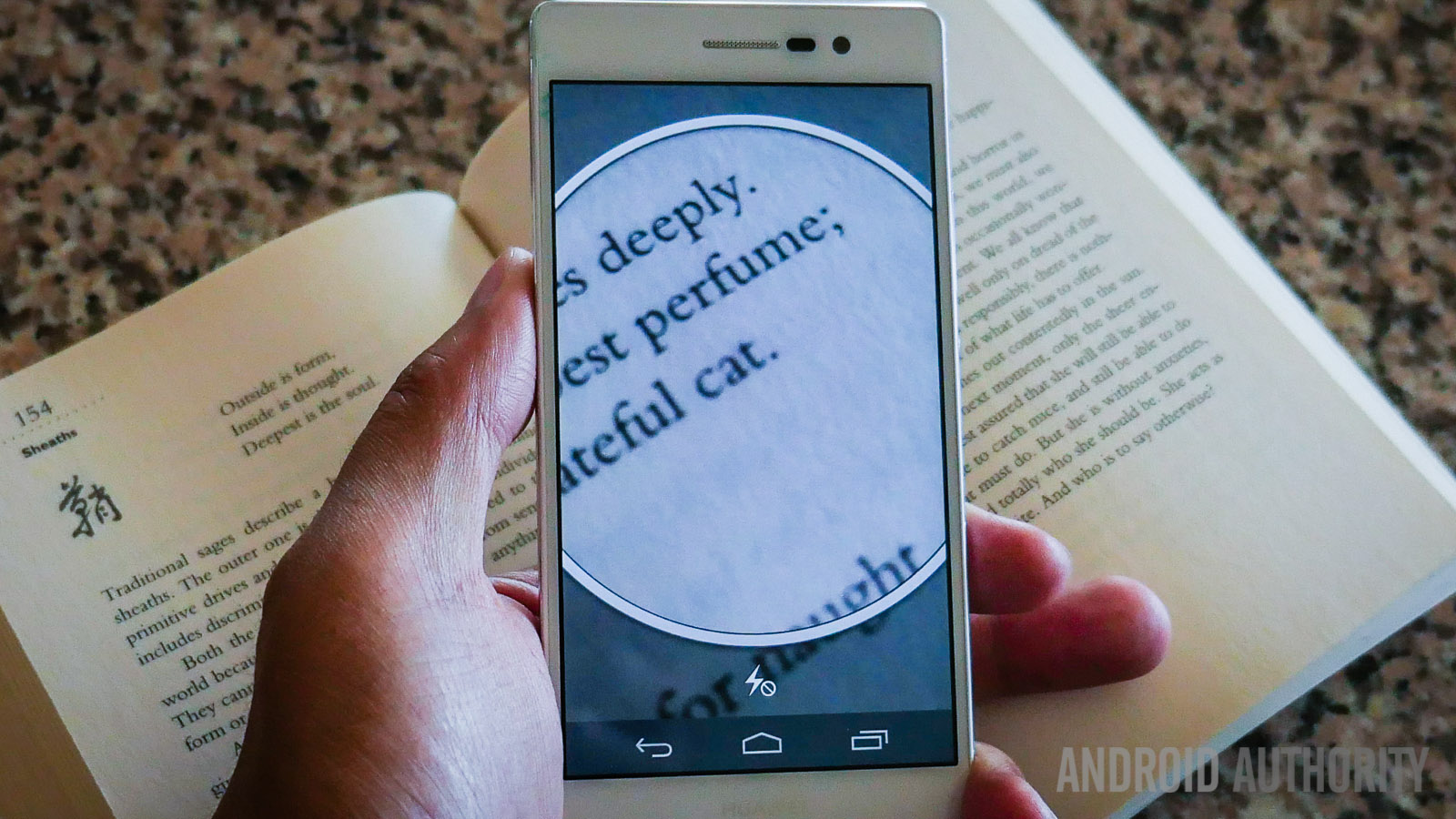
The Ascend P7 proved that the firm wasn’t going anywhere, and stepped things up in a number of key areas. HUAWEI continued to recognize the trend towards selfie cameras, offering an 8MP camera on the front in a time when few other brands were doing so, for one.
It also offered a solid experience for the most part, delivering a Kirin 910T processor along with 2GB of RAM and 16GB of storage. The Kirin 910T was definitely a few steps behind the Snapdragon 801 seen in other Android flagships though, and this performance gap would persist for a few years yet.
But the Ascend P7 demonstrated flagship-level features in other areas, such as a 13MP f/2.0 main camera and a full HD IPS LCD screen. And once again, the €350 price tag made it a bargain compared to other high-end phones.
HUAWEI Ascend P7 fast facts:
- The Ascend P7 marked the first time we saw a Kirin-branded SoC in a P series flagship.
- HUAWEI tried really hard to make the word “groufie” happen, owing to the P7’s panoramic selfie mode.
- It launched with Android 4.4.2 and was upgraded to Android 5.1.
HUAWEI P8 (2015)
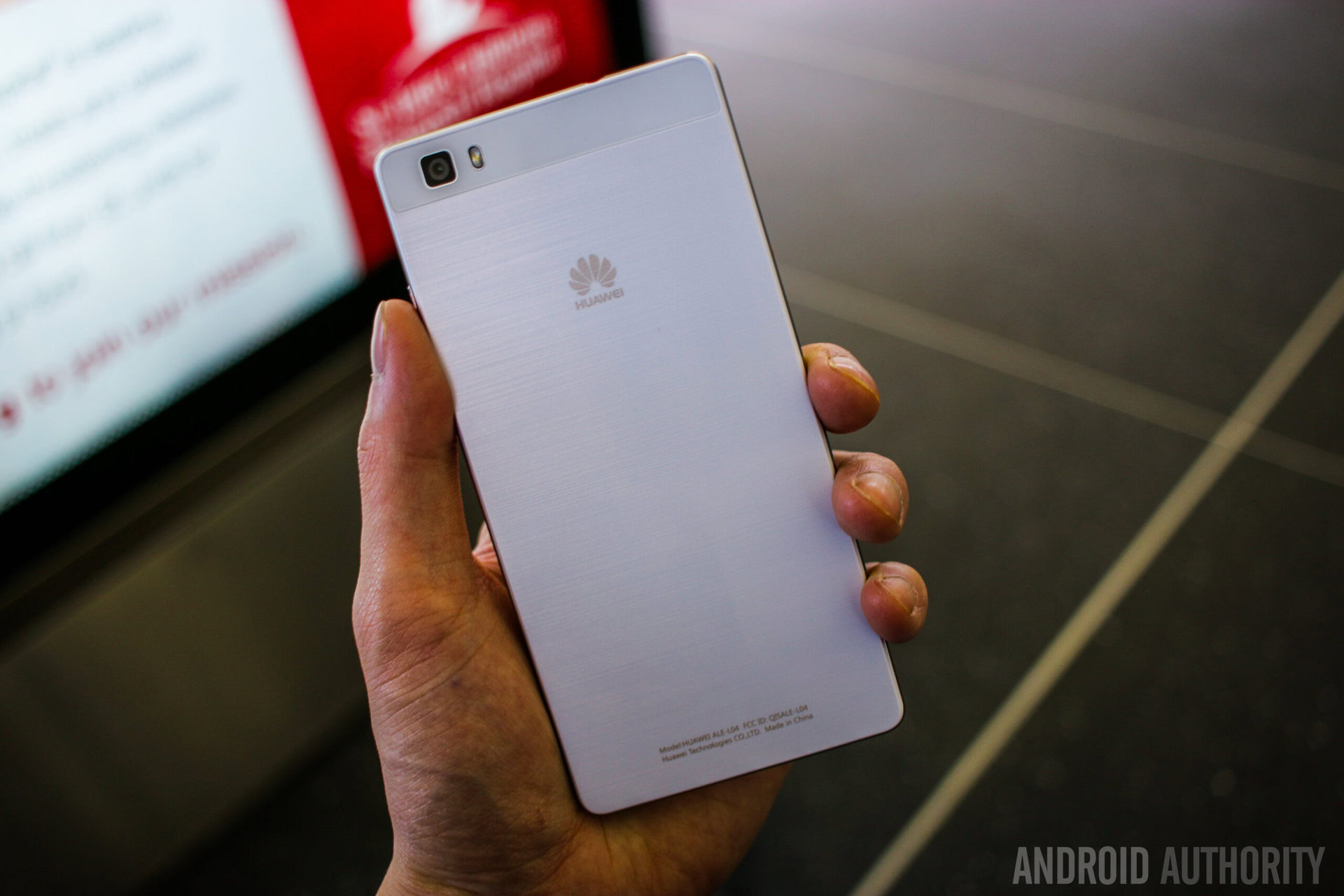
Was this 2015’s most aesthetically pleasing phone? We wouldn’t quite go so far to say that, but the HUAWEI P8 certainly drew attention for its design back then. Featuring an aluminum body (albeit with a plastic camera window and iPhone-style antenna lines), a textured power button, and a pleasant amount of heft, the P8 was definitely easy on the eyes.
Huawei’s 2015 device also showed some impressive capabilities in the camera field, being capable of churning out Light Painting shots via the 13MP OIS-enabled camera. In fact, the 13MP camera used an RGBW color filter, as opposed to the traditional RGB sensor. This sounds rather similar to the approach taken by HUAWEI for the P30 series.
Other specs include 3GB of RAM, 16GB or 64GB of expandable storage, a sharp 5.2-inch FHD screen (IPS), a 2,680mAh battery, and an 8MP selfie snapper.
The P8 was powered by HUAWEI’s Kirin 930 and 935 processor, and despite HUAWEI’s claims, it was definitely closer to mid-range silicon. Between the budget octa-core Cortex-A53 CPU cores and Mali-T628 MP4 graphics, it still had some way to go towards challenging Qualcomm and Samsung.
HUAWEI P8 fast facts:
- This marked the first HUAWEI P series flagship without “Ascend” in its name.
- HUAWEI debuted the P8 Lite alongside the P8, and we’ve seen Lite models along with the flagship ever since.
- HUAWEI also offered a P8 Max, delivering a much bigger battery and larger screen.
HUAWEI P9 series (2016)
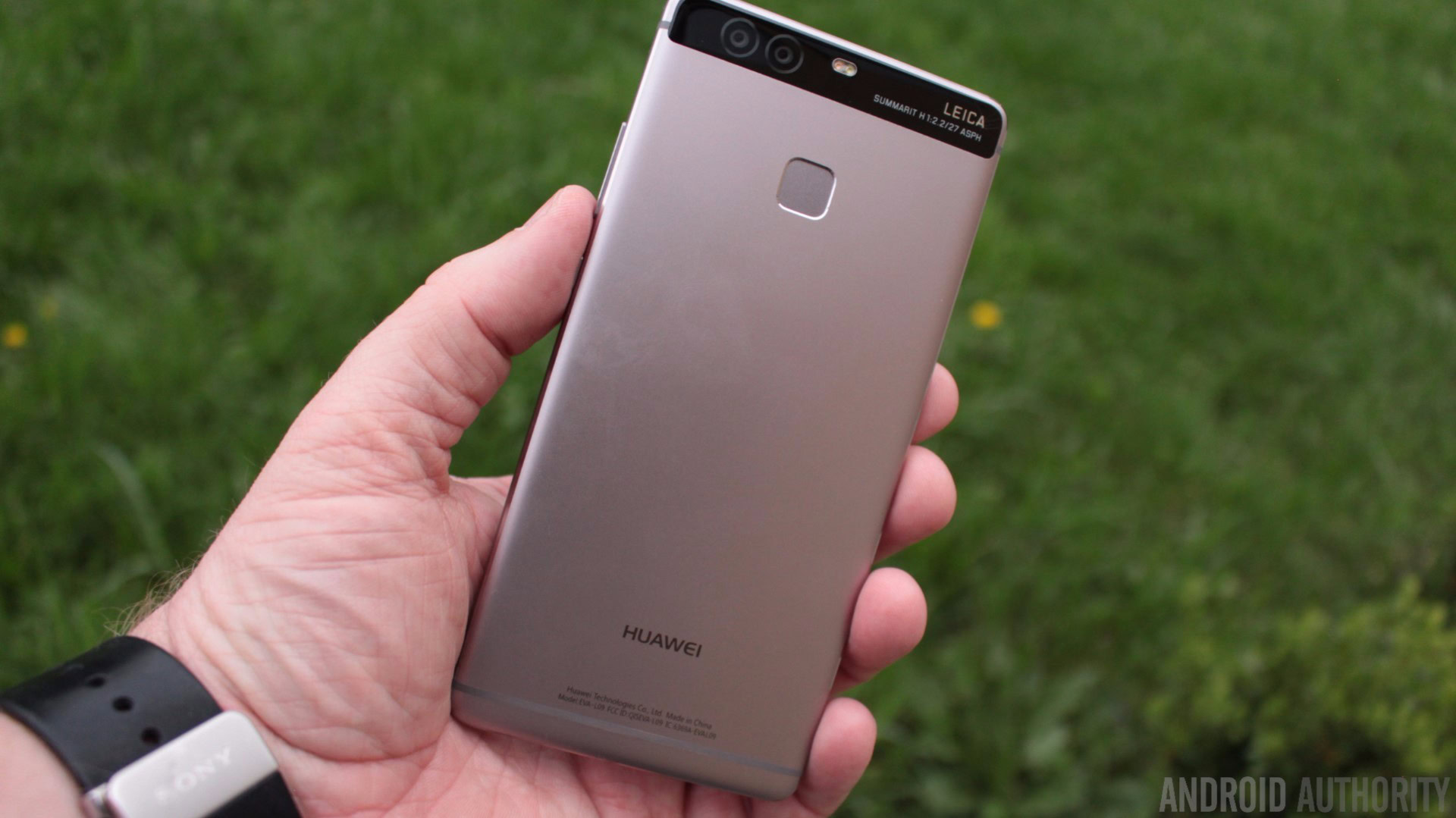
If any phone made rival brands take HUAWEI seriously, it was arguably the P9 and P9 Plus. The company evolved the design here, still offering a unibody metal design with a “window” for the area around the rear camera. We also got some Apple-style antenna lines here, as well as a fingerprint scanner for the first time in the series. This scanner also offered gestures, such as the ability to swipe through photos or activate the notification shade.
HUAWEI went all-out on the photography front though, enlisting camera company Leica’s help for lenses and processing, while being one of the first to offer dual rear cameras (a 12MP+12MP monochrome setup). The camera experience evolved to offer monochrome photos, as well as depth of field effects via simulated aperture adjustments.
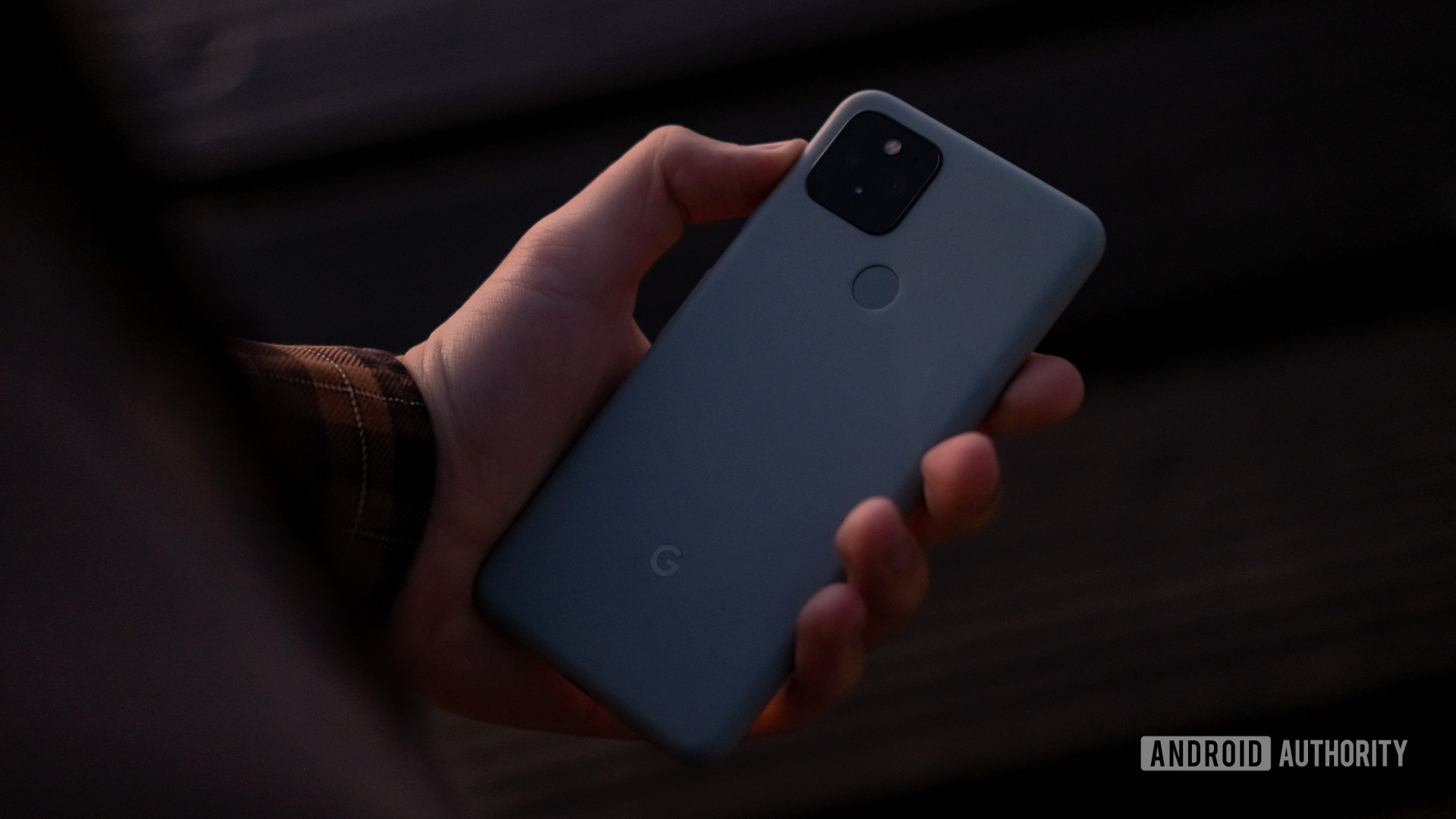
It all came together to make for a good photography platform in most conditions, although the lack of OIS was a glaring omission. Having used the phone as a daily driver for roughly a year, I also felt that it didn’t quite have the same reliable fire-and-forget nature as Apple and Samsung devices. I also thought that video recording in low light was awful, even back then.
Horsepower, which had long been the family’s weakness, saw a big step up with the Kirin 955 processor. This SoC marked the first time we saw powerful Cortex cores in a HUAWEI flagship, offering four Cortex-A72 cores in addition to four power-sipping Cortex-A53 cores. GPU performance still lagged far behind Samsung’s phones though, using a Mali T880 MP4 GPU versus the Galaxy S7‘s Mali T880 MP12 component. But it’s clear HUAWEI made a massive improvement overall.
HUAWEI also offered the P9 Plus, packing a slightly bigger (5.2-inch) OLED screen and a bigger battery among key differences.
HUAWEI P9 series fast facts:
- This wasn’t the first dual-camera HUAWEI phone though, as the HONOR 6 Plus launched in late 2014.
- Unlike other 2016 flagships, the HUAWEI P9 series topped out at 1080p/60fps recording rather than 4K.
- The P9 Plus also offered 3D Touch functionality, following in Apple’s steps. I wonder what happened to that tech.
HUAWEI P10 series (2017)
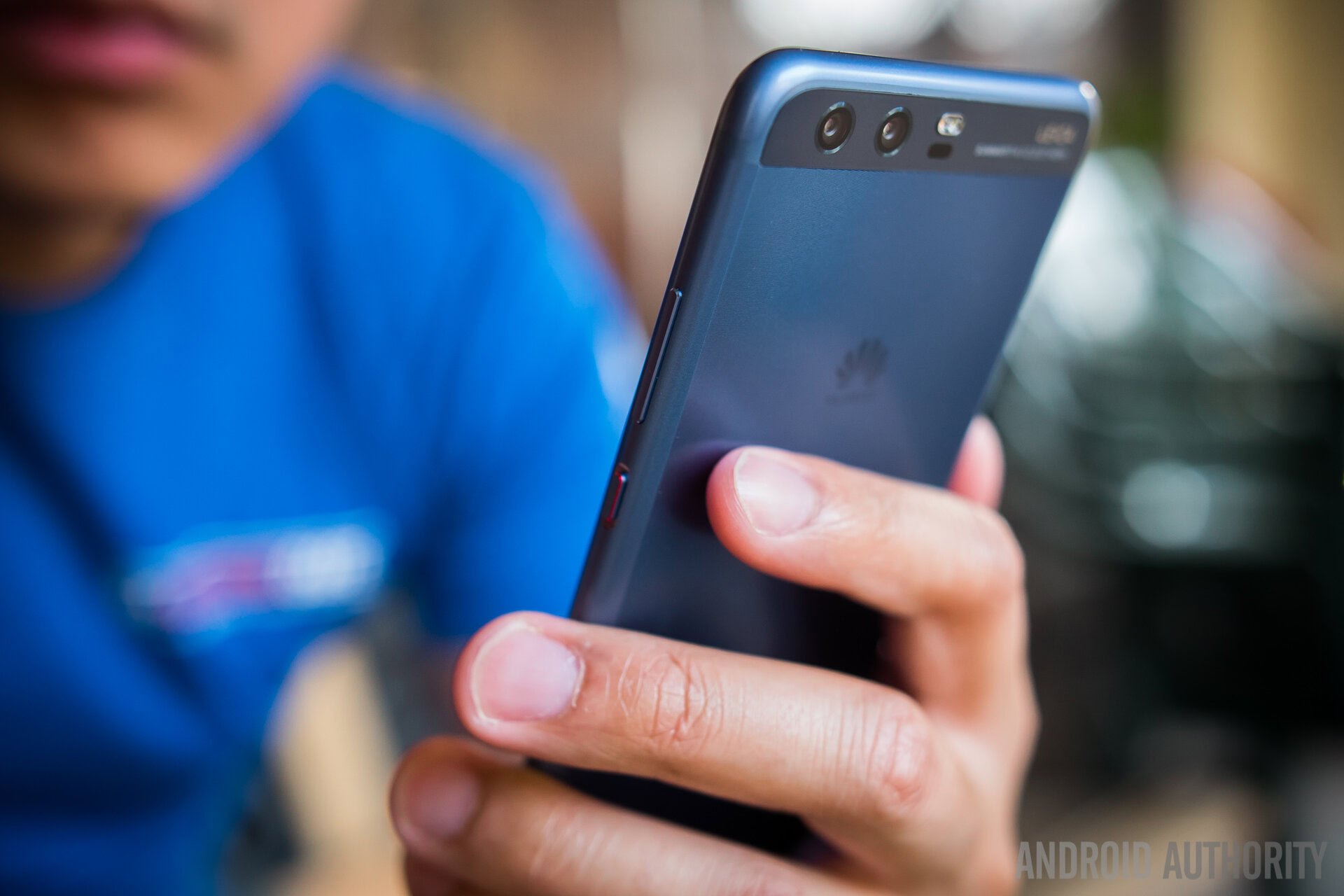
Huawei’s P10 and P10 Plus delivered a distinctive and polarizing “hyper diamond cut” finish that stood out from glass-backed rivals. The firm also moved the fingerprint scanner to the front, resulting in a phone that looked like an iPhone or HTC One A9.
HUAWEI attempted to ape Meizu by mapping gestures to this scanner, allowing you to go back with a light tap of the scanner/home key and go home with a firm press. Need to activate the recents menu? Then you only need a lateral swipe on the scanner/home key. We thought these gestures were “surprisingly intuitive” in our HUAWEI P10 review, but the move to full-screen designs/gestures and the lack of a Galaxy S8-style haptic home button means you don’t get this on newer devices.
The P10 series doesn’t make for a massive improvement on paper when it comes to camera specifications. You’ve got a 12MP+20MP monochrome rear camera pairing here, but the added resolution and optical image stabilization definitely helped to deliver better results. It didn’t hurt that the Kirin 960 chipset finally brought 4K recording to the P series.
We also saw a Plus variant for the last time in the range before HUAWEI switched to the Pro moniker with the P20 series. The P10 Plus differed from the vanilla P10 by having a bigger battery, a bigger and sharper screen, and wider rear camera apertures.
HUAWEI P10 series fast facts:
- Huawei’s P10 series was capable of shooting 20MP color shots, even though the color camera topped out at 12MP.
- HUAWEI also brought a software-based portrait mode to the front-facing camera, coming several months before the Pixel series and iPhones gained selfie portraits.
- Some P10 phones shipped with UFS storage while others shipped with slower eMMC storage. Go figure.
- The phone came in a rather interesting package, opening up akin to a book rather than a standard phone box.
HUAWEI P20 series (2018)
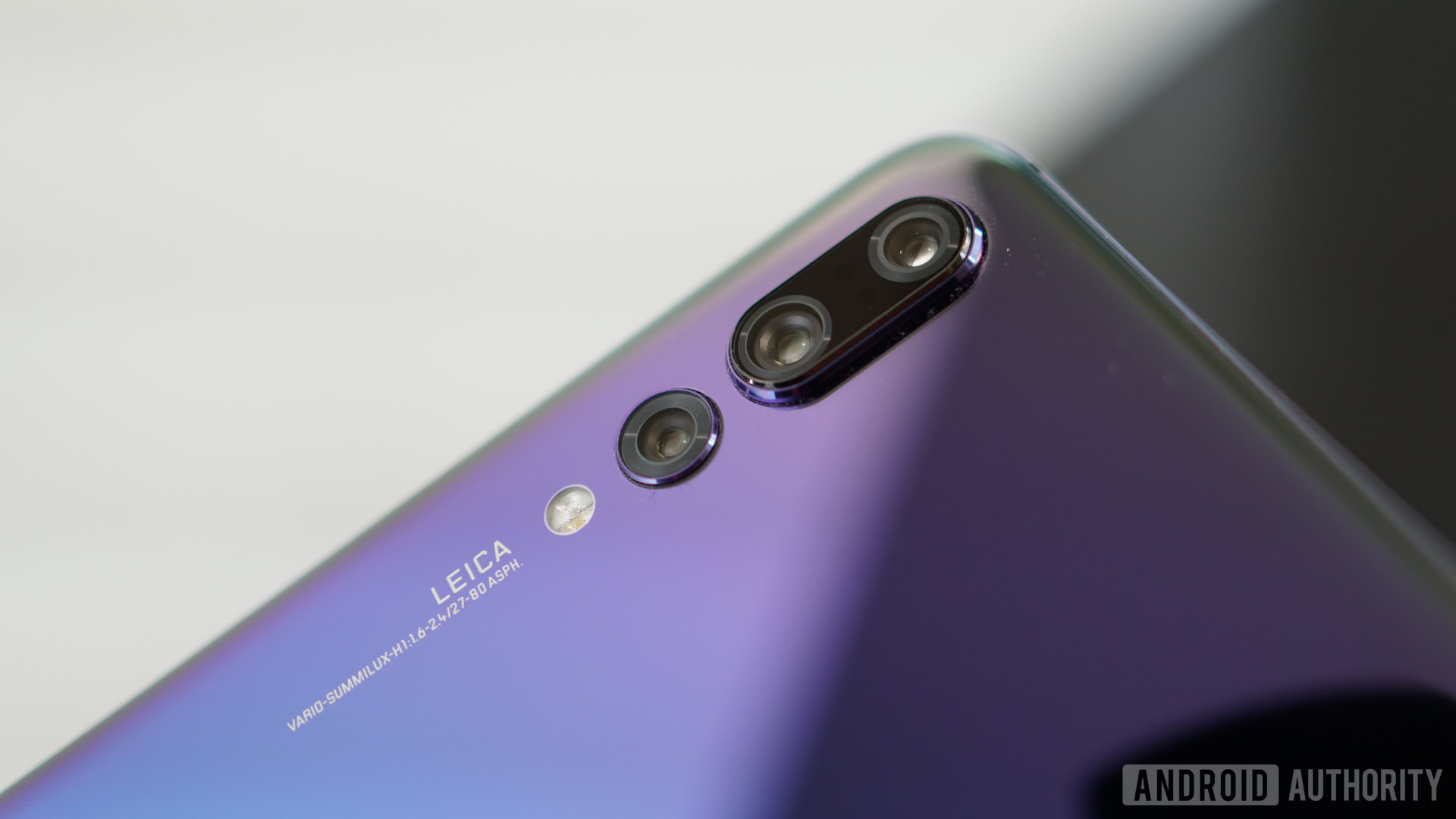
If the likes of the P8 and P9 put HUAWEI on the map and made it a popular brand, then the P20 series proved that the company was gunning for the number one spot. HUAWEI’s early 2018 flagships brought grunt, endurance, and competitive camera technology.
Starting with the grunt, the P20 series offered the Kirin 970 chipset, which was the first Android phone processor to offer a dedicated machine learning chip. This piece of silicon enabled offline language translation with the pre-installed Microsoft translation tool and better image processing/recognition capabilities. But it also enabled significant energy savings, allowing the CPU and GPU to offload machine learning tasks.
The vanilla P20 delivered a pretty solid 3,400mAh battery, while the P20 Pro serves up a 4,000mAh battery. Either way, you’re getting 22.5W wired charging. Unfortunately, wireless charging wasn’t available on either model.
But the biggest reason to get the P20 series was for the photography experience, as the P20 Pro in particular was the first triple rear camera smartphone. It offered a massive 40MP primary camera, 20MP monochrome sensor, and 8MP 3x telephoto snapper. The phone could also deliver 5x hybrid zoom, essentially using image fusion and processing to yield better results than traditional digital zoom.
The standard P20 was far more modest in its camera capabilities, offering a 12MP+20MP monochrome dual rear camera pairing. The phone still had a few camera features in common with its Pro stablemate, including a great Night mode.
The P20 series also popularized the gradient color trend, with its Twilight colorway being rather striking. And we’ve since seen the likes of Samsung and Vivo offer this option afterwards.
HUAWEI P20 series fast facts:
- Night mode on the P20 family preceded Google and OnePlus’s own night modes by several months.
- The HUAWEI P20 series was also accompanied by the HUAWEI Mate RS Porsche Design, offering two fingerprint scanners (rear and in-display), a sharper screen, and wireless charging.
- HUAWEI released P20 Pro models with leather backs at IFA 2018.
- The series is scheduled to get Android 10 later in 2020.
HUAWEI P30 series (2019)
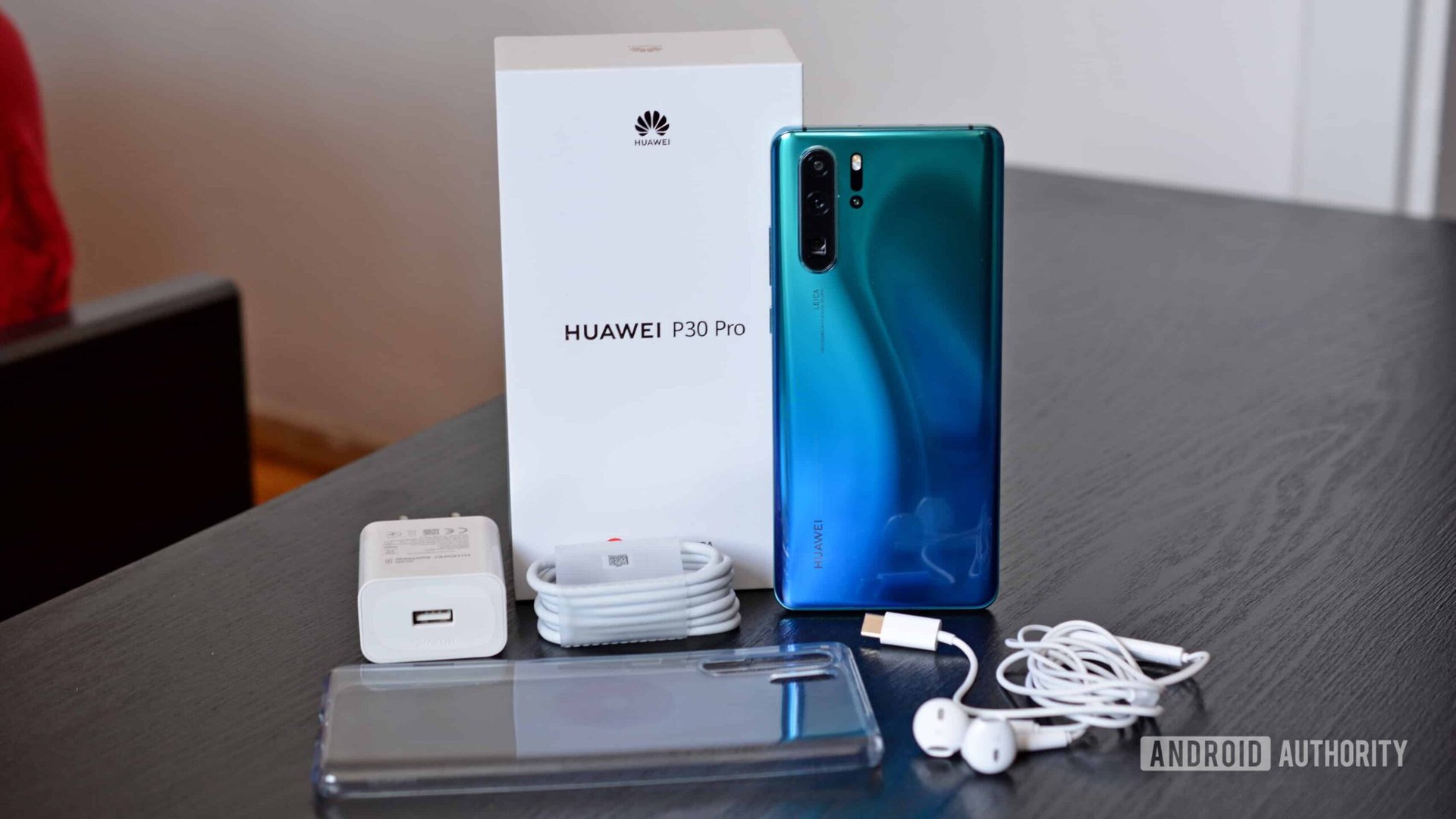
Building on the foundation set by the P20 series and Mate 20 family, the HUAWEI P30 series continues a trend of firsts and well-executed basics.
The star of the show is the P30 Pro, featuring a 5x periscope zoom camera for the first time in a smartphone (along with the OPPO Reno 10X Zoom Edition). This sees a prism being used to offer better zoom levels than a typical telephoto camera. No wonder Samsung acquired one of the key companies behind the tech and used it in the Galaxy S20 Ultra.
Huawei’s Pro device also stands out from the standard model thanks to a bigger battery (4,200mAh vs 3,650mAh), faster wired charging (40W vs 22.5W), IP68 water-resistance rating, and a higher resolution ultra-wide camera (20MP vs 16MP).
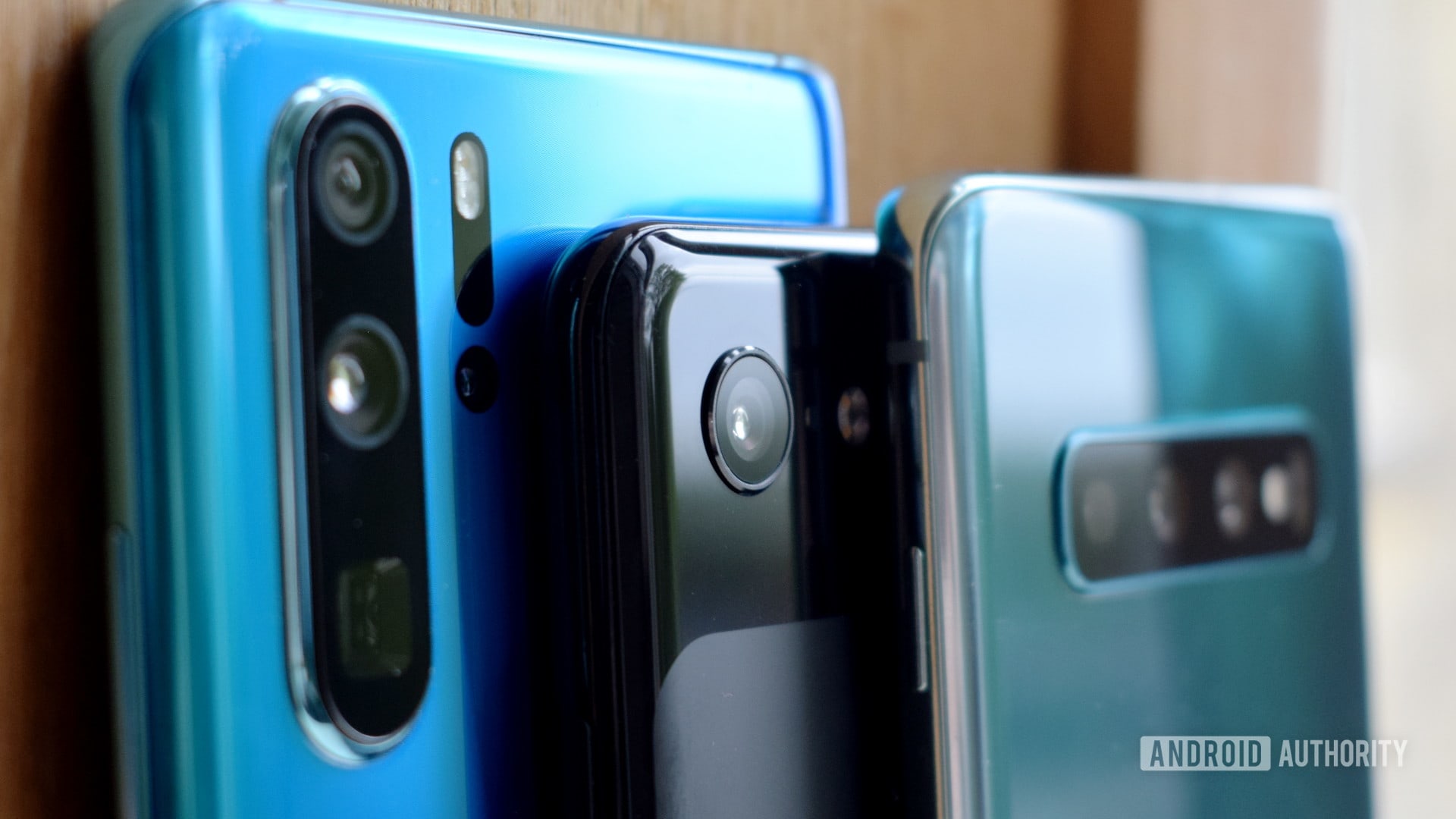
Both phones feature a 40MP primary camera, ditching the RGB (red, green, and blue) color filter seen in all smartphone cameras in favor of an RYYB (red, yellow, blue) filter. This is meant to improve low-light performance, and we thought it definitely made the P30 series a low-light champ.
The P30 series is powered by the Kirin 980 chipset, which packed the latest Arm Cortex-A76 cores at the time, a Mali-G76 MP10 GPU, and second-generation NPU. The two phones also share an in-display fingerprint sensor, 32MP selfie cameras, and support for HUAWEI’s proprietary NM memory cards.
HUAWEI P30 series fast facts:
- The standard P30 didn’t have wireless charging out of the box, but HUAWEI offered a wireless charging case as an accessory.
- Huawei’s standard model does however have a feature the Pro variant lacks, and that’s a headphone port.
- The P30 Pro uses an “electromagnetic levitation” speaker in lieu of a visible earpiece, essentially vibrating the screen to transmit sound to your ear.
- This might be the last HUAWEI flagship to offer Google Mobile Services for a while, owing to the US trade ban.
What about the P40 series?
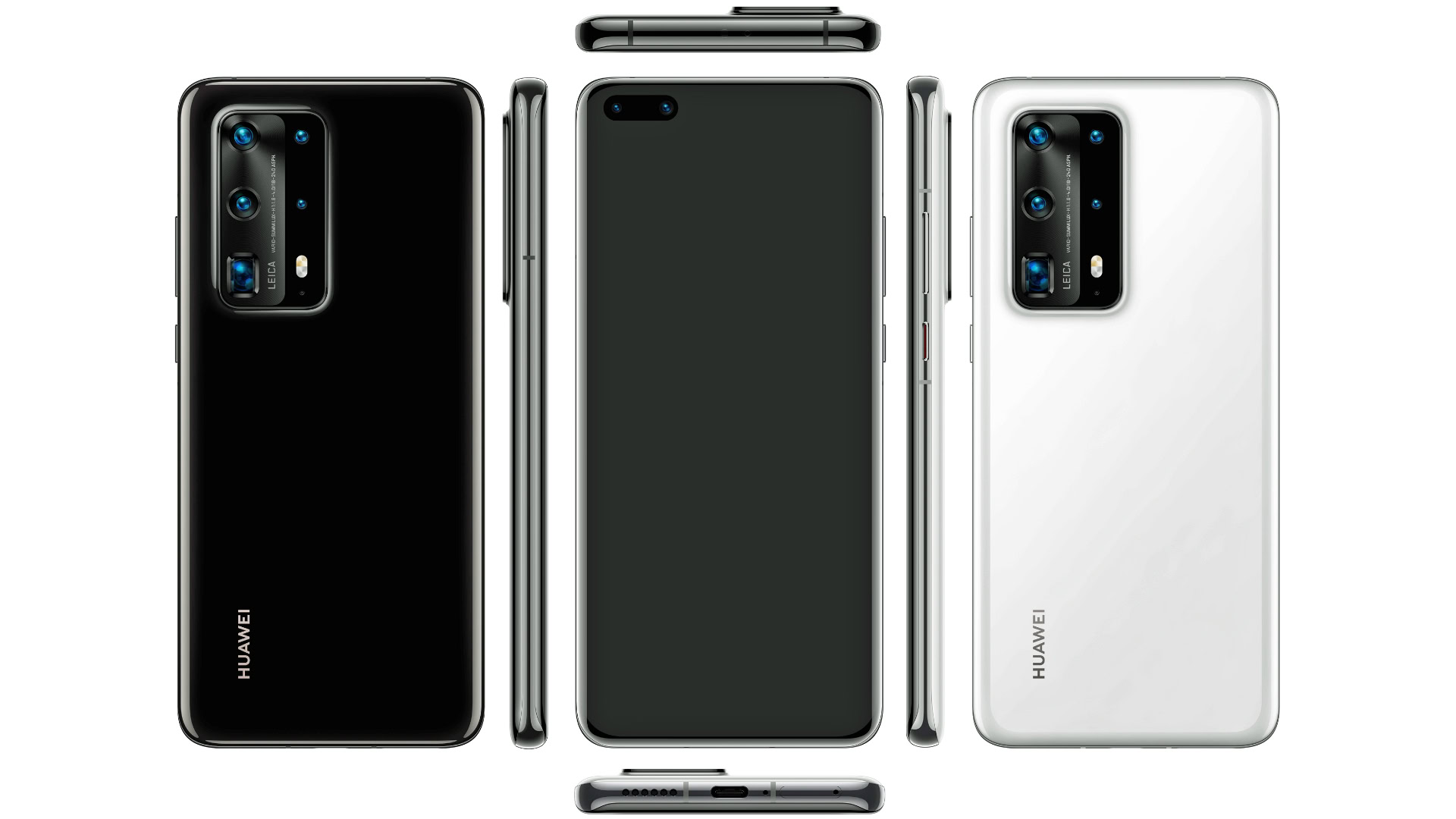
Huawei’s next P-series flagship, the P40 series, is due on Thursday, March 26. And if there’s one thing we know about the range, it’s that it will be the first P-series flagship to lack Google Mobile Services.
We’re also expecting the P40 series to offer the Kirin 990 processor, as the series traditionally adopts the same chipset as the last Mate entry (Mate 30 series). It’s also believed that we could see three models this time, namely standard, Pro, and Premium/Pro Plus editions. Other rumors point to a punch-hole display and an upgraded periscope camera.
You can check out our HUAWEI P40 rumor hub at the previous link, covering everything from the name and design to power and camera information.
It’s clear HUAWEI has steadily progressed over the years, going from a low-powered player to a true flagship juggernaut. But what would you like to see from future HUAWEI flagships? Give us your wishlist below!